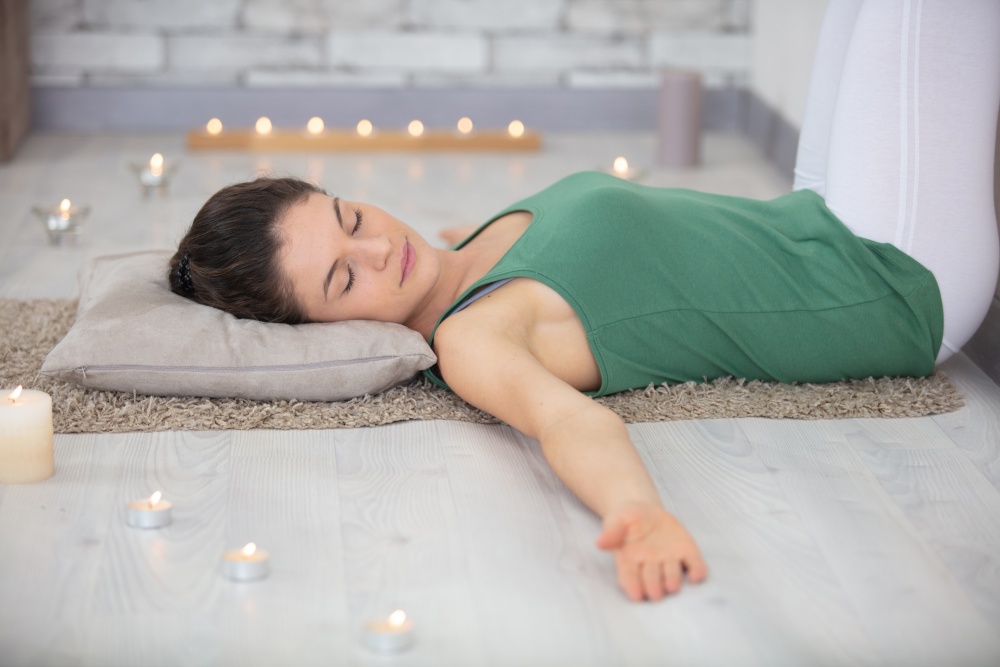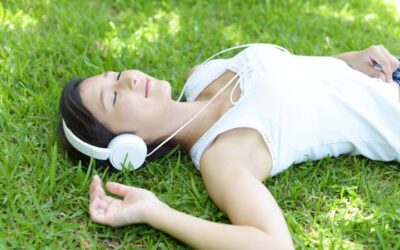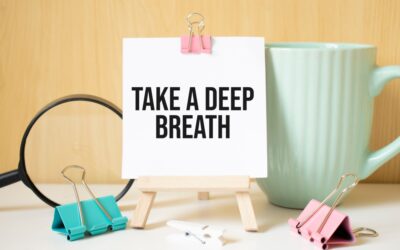In today’s fast-paced and stress-ridden world, finding effective methods to promote relaxation and restore balance in our lives has become paramount. One technique that has gained considerable recognition in recent years is Progressive Muscle Relaxation (PMR). PMR has the potential to offer a simple way to release tension, reduce stress, and enhance overall well-being.
In this article, we will delve deeper into the practice of Progressive Muscle Relaxation and explore its many health benefits. We will also provide step-by-step instructions on how to perform this technique effectively, ensuring that you can harness its transformative power and enhance your overall well-being.
Progressive Muscle Relaxation (PMR) Background
The concept of Progressive Muscle Relaxation was first developed in the early 20th century by Dr. Edmund Jacobson, a pioneering American physician and psychiatrist. Driven by his belief that the mind and body are intimately connected, he created a systematic approach to help individuals alleviate physical and mental stress through muscle relaxation.
What are the health benefits of PMR?
Not only does PMR offer immediate relief from stress and anxiety, but it also provides a range of long-term health benefits. Research has demonstrated its effectiveness in managing various conditions, including chronic pain, sleep quality, and even symptoms associated with depression and anxiety disorders.
One of the greatest advantages of Progressive Muscle Relaxation is its accessibility. Unlike some other relaxation techniques that may require extensive training or special equipment, PMR can be practiced by anyone, anywhere, and at any time. It requires only a few minutes of focused attention, making it a versatile tool for incorporating relaxation into our daily routines.
How Does Progressive Muscle Relaxation Work?
Progressive Muscle Relaxation (PMR) works by systematically tensing and then relaxing different muscle groups throughout the body. The technique aims to bring awareness to the sensations of tension and relaxation, allowing individuals to recognize and release muscular tension more effectively.
Progressive Muscle Relaxation Step-By-Step Instructions
- Preparation: Find a quiet and comfortable space where you can relax without distractions. Loosen any tight or restrictive clothing and get into a comfortable posture, such as lying down or sitting in a supportive chair.
- Muscle Group Sequence: Begin the practice by focusing on one muscle group at a time, moving progressively throughout the body. The usual sequence starts with the muscles in the hands and forearms, gradually progressing upward to the shoulders, neck, face, and finally the lower body, including the thighs, calves, and feet.
- Tensing Phase: Once you bring your attention to a specific muscle group, intentionally contract and tense those muscles for approximately 5 to 10 seconds. Make sure the tension is deliberate and controlled, but not to the point of discomfort or pain.
- Release and Relaxation Phase: After tensing the muscles, release the tension abruptly and completely. As you let go, focus on the sensations of relaxation and the contrast between tension and relaxation in the muscle group. Allow the muscles to become loose, limp, and free of any residual tension.
- Awareness and Mindfulness: Throughout the process, cultivate a sense of awareness and mindfulness. Pay attention to the physical sensations associated with both tension and relaxation. Notice how different muscle groups feel when they are tense versus when they are relaxed.
- Progression and Repetition: Move through each muscle group systematically, progressing from one area of the body to another. Repeat the process for each muscle group, allowing yourself to fully experience the release of tension and the deepening state of relaxation with each repetition.
- Conclusion and Integration: Once you have gone through the entire sequence, take a few moments to enjoy the overall sense of relaxation and calmness that PMR has induced. Gradually bring your awareness back to the present moment before resuming your regular activities.
The practice of PMR works by training the mind and body to recognize the difference between muscle tension and relaxation. By deliberately tensing and then releasing each muscle group, you become more attuned to the physical sensations associated with both states. This heightened awareness allows you to identify and release tension more effectively, promoting a deeper sense of relaxation, stress reduction, and overall well-being.
Regular practice of PMR can help individuals cultivate a greater mind-body connection, reduce muscle tension and soreness, alleviate stress and anxiety, improve sleep quality, lower blood pressure, and enhance overall physical and mental health.
References:
Toussaint L, Nguyen QA, Roettger C, Dixon K, Offenbächer M, Kohls N, Hirsch J, Sirois F. Effectiveness of Progressive Muscle Relaxation, Deep Breathing, and Guided Imagery in Promoting Psychological and Physiological States of Relaxation. Evid Based Complement Alternat Med. 2021 Jul 2;2021:5924040. doi: 10.1155/2021/5924040. PMID: 34306146; PMCID: PMC8272667.
Gopichandran L, Srivastsava AK, Vanamail P, Kanniammal C, Valli G, Mahendra J, Dhandapani M. Effectiveness of Progressive Muscle Relaxation and Deep Breathing Exercise on Pain, Disability, and Sleep Among Patients With Chronic Tension-Type Headache: A Randomized Control Trial. Holist Nurs Pract. 2021 May 28. doi: 10.1097/HNP.0000000000000460. Epub ahead of print. PMID: 34054116.
Simon KC, McDevitt EA, Ragano R, Mednick SC. Progressive muscle relaxation increases slow-wave sleep during a daytime nap. J Sleep Res. 2022 Oct;31(5):e13574. doi: 10.1111/jsr.13574. Epub 2022 Mar 30. PMID: 35355351; PMCID: PMC9786620.
Ganjeali, S., Farsi, Z., Sajadi, S.A. et al. The effect of the demonstration-based progressive muscle relaxation technique on stress and anxiety in nurses caring for COVID-19 patients: a randomized clinical trial. BMC Psychiatry 22, 791 (2022). https://doi.org/10.1186/s12888-022-04456-3
Exploring the Connection Between Sleep and Weight Loss
An estimated 50 to 70 million people in the U.S. are battling chronic insomnia and sleep disorders. These seemingly harmless conditions brought on by stress, changes in sleep schedules or lifestyles, and medications can be quite disruptive. Over time, it can lead to...
Soothing Stress With Sound Therapy
Seventy-six percent of U.S. adults reported that they experienced at least one symptom of stress in the last month such as headaches, fatigue, nervousness, anxiety, depression, and sadness. It’s easy to see why. Americans are among the most stressed out people in the...
Silent Storms: The Atypical Form of Depression You Need to Know More About
Approximately 280 million people suffer from depression on a global scale. The figure is harrowing but doesn’t give you the complete picture because depression isn’t always visible. Sometimes, people experience symptoms related to it but can’t pinpoint what they’re...
Understanding The Link Between L-Theanine and Stress
Introduction Today, stress is one of the leading causes of physical challenges. Yes, what used to be a feeling of tension or a state of mind when faced with a difficult situation can impact you physically and even how you react and handle things emotionally and...
The power of protein on weight management
Weight management can be a challenging journey for many individuals, but with the right approach, achieving a healthy and sustainable weight is possible. Among the various factors that influence weight loss success, the role of protein cannot be overstated. Protein is...
Mindfulness: Health Benefits and Getting Started
Understanding Mindfulness, Its Benefits, and How To Get Started Mindfulness. We hear this word so often that it’s easy to dismiss it as the latest New Age fad. But before dispensing with the idea altogether, consider that mindfulness-based cognitive therapy has been...
What is breathwork? Beginners guide to therapeutic meditation
What Is Breathwork? A Beginner's Guide To Therapeutic Meditation Breathing is automatic, unconscious, and involuntary. You do it without thinking, both when you’re awake and asleep. It’s what keeps you alive and functioning. But you can also control your breathing if...
Sarcopenia: Impact on health and longevity
Implications Of Sarcopenia On Health And Longevity It is easy to assume that losing some strength is a “normal part of aging”. In fact, maybe you have even heard this from your healthcare providers. The truth is that getting “weaker” as we age is not “normal” and...
Can Flow State Improve Healthspan?
Have you ever been so engrossed in a task that time seemed to stand still? Or maybe you've experienced a surge of creativity and productivity that left you feeling invincible. If so, you may have entered the elusive state of flow. This mental state, also known as...
Turn your daily walk into a fitness walk
Ways to get a workout out of your daily walk Daily walks have grown in popularity over the last few years. And for good reason. They are a great way to get sunlight, clear your mind, and breathe in some fresh air. Incorporating walks into your day is also a great way...











